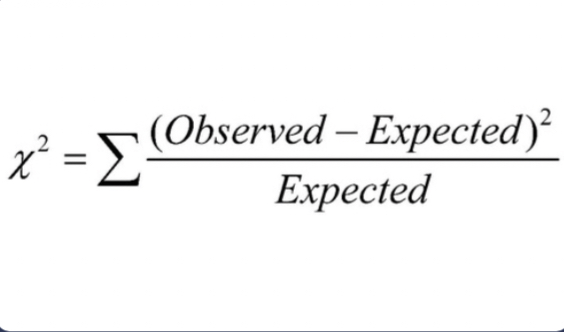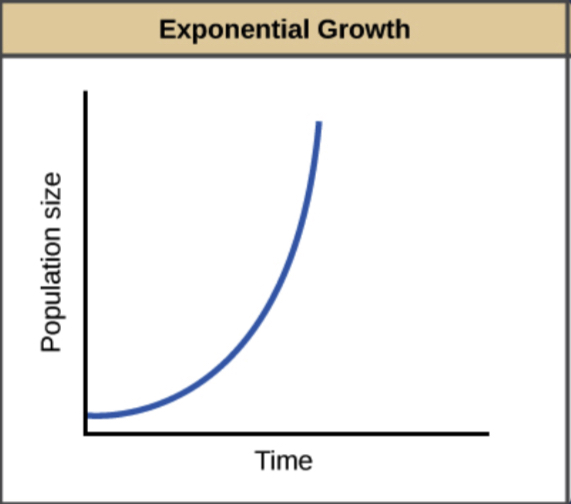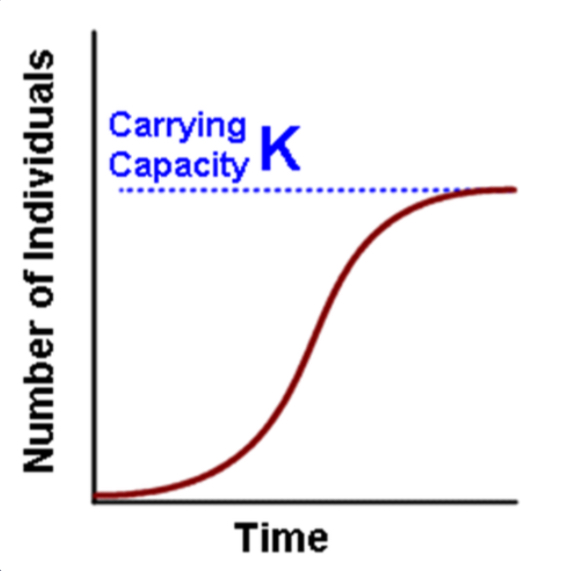IB Biology (First quarter)
1/113
Earn XP
Description and Tags
Name | Mastery | Learn | Test | Matching | Spaced |
|---|
No study sessions yet.
114 Terms
Ecosystem
A community of organisms in an area and their abiotic environment
Abiotic Factors
nonliving parts of an ecosystem such as air, water, soil, rocks, etc.
Biotic Factors
Living parts of an ecosystem
Species
A group of organisms with distinct characteristics that can potentially interbreed to produce fertile offspring
Populations
Groups of organisms of the same species who live in the same area at the same time.
Organisms
A living thing that has an organized structure, can react to stimuli, reproduce, grow, adapt, and maintain homeostasis.
Sessile Organisms
An organism which lacks the ability for self-locomation
Motile Organisms
An organism that can move on its own
Direct observation
counting each individual organism in an area
Indirect observation
Counting the signs of an organims in an area
What are the signs used for indirect observation?
Typically this is waste from feeding, eggs, or a shelter the organism contructed.
Advantages and disadvantages of direct observation
It is extremely accurate if all of the population is counted, however it is time consuming.
Advantages and disadvantages of indirect observation
It effectively calculates the rate/how often organisms are reproducing based on their environment, but less accurate than counting each individual organism
Population sampling
Counting the number of an organism in one or more small areas, then estimating the nmber for the total area.
What is a typical sampling strategy for sessile populations?
Random quadrat or transect
What is a typical sampling strategy for motile populations?
Mark and recapture
Random quadrat sampling
Sampling strategy to estimate poulation size and/or biodeversity index or sessile poulations by counting the number of organims per quadrat of known size in random locations throughout the population range.
Random quadrat sampling formula
Average organsims per quadrat (area of habitat/area of quadrat) NOTE* the paranthesese are multiplication
Why is it important for quadrats to be evenly placed?
Because it gives a more accurate idea of the number of organisms per the area of the habitat observed.
Transect sampling
running a line through a given habitat. then counting every organism found within a fixed distance from the line is recorded. it produces a list of species present and the number of occurrences of each species within the area
Why is transect sampling used?
To determine if a sessile populations distribution changes across an area
Mark and recapture sampling
A number of animals/motile organisms are captured, marked, and then returned unharmed to their environment. At a later time, more animals are captured, and with the number that are marked, the total population is estimated.
Mark and recapture formula
(number marked first catch x total number of second catch)/number marked second catch = N
OR cross multiply:
(# marked in second sample/total caught in second sample) = (#marked in first sample/size of whole population (N))
What is mean, median, and mode?
Mean is the average, mode is most reoccuring numbers, and median is the middle of the numbers found.
What is standard deviation?
measures the spread of a distribution around the mean
How is standard deviation calculated?
Let the mean be b, and each number counted be a, and n is the population size (found with the quadrat sampling formula):
√(a-b)²/(n-1) NOTE* the whole equation is squared not just the first portion
What are the types of population distributions?
Random, aggregated (sparatic clusters of an organism), and uniform
What is the Chi-square test?
A test of association used to determine if the presence of one species is associated with the presence of another.
What is the format in which you write a chi-square conclusion?
The calculated x² value of ___ is lower/higher than the critical x² value of 3.84 at the 0.05 level of significance; therefore, we fail to reject/cannot reject the null hypothesis. We conclude that ther is/is no significant association between _____ and _____.
What is the 0.05 significance level?
3.84 at the 1st degree of freedom, this basically means that we are 95% certain on the data if the two species do or do not correlate.
How do you calculate chi-square data?
The first should be the observed values and sums. The second is the expected which is (column total x row total)/(total number of quadrants). The last is the x² squared values, this for each individual square is (first square value - second square value)²/(second square value), after doing this for each individual square find the sum of all the answers, this is the calculated x² value. The image visualizes the last step, ignore the Σ, its unimportant.

Exponential growth
Exponential growth occurs when there is unlimited resources in an ideal environment consisted of no competition. This takes the limits away from population growth. Initially, the growth will be slow as there is a shortage of reproducing individuals that may be widely dispersed. However, as the population increases the rate of growth similarly increases, resulting in the exponential curve (the J shape of the graph).

True or False: population growth slows as the population reaches the carrying capacity of the environment
True
Biotic potential (exponential growth)
The maximum growth rate for a given population
When is exponential growth seen?
In very small populations or in regions that are newly colonized by a species.
Logistic growth
Logistical population growth will occur when population numbers begin to approach a finite carrying capacity. When the population approaches this carrying capacity, environmental resistance occurs, which's slows the rate of growth resulting in the sigmoidal growth curve (the S shape in the graph).

Carrying capacity
The maximum number of a species that can be sustainable supported by the environment.
Environmental resistance (logistic growth)
All the limiting factors that act together to limit the growth of a population. Resistance of the environment to further growth; less space; less food, diseases, weather, etc.
True or False: logistic growth is not a sign of a stable population
False; logistic growth will eventually be seen in any stable population occupying a fixed geographic space.
What are factors that may limit carrying capacity?
Human impacts (poaching, habitat loss, pollution), change in another population (predator vs. prey), natural disasters.
Limiting Factors
Environmental conditions that control the rate at which a process (ex. Population growth) can occur
What are the two ways that population growth can be determined?
By density-depended or density-independent factors.
Density-dependent factors
These are influenced by the relative size of a population: PANDA (Predators, Availability of resources, Nutrient supply, Disease, Accumulation of wastes)
Density-independent factors
Environmental factors/no influenced by the relative size of a population: PAW (Phenomena (natural disasters), Abiotic factors, Weather conditions)
Top-down population control
Top down factors are pressures applied by a higher trophic level to control the population dynamics of the ecosystem. This is done when a top predator either suppresses the abundance of its prey, or alters its behavior to limit its rate of population growth
What is the pattern of Top-Down population control?
It oscillates/goes up and down (the increase or decrease of a top predator causes the decrease in the next, then the increase in another, etc.)
True or False: keystone species commonly excerpt top-down control
True; they prevent lower trophic levels from monopolizing essential resources.
Bottom-up population control
This is pressures that limit the availability of resources to lower trophic levels (producers). This lack of resources at lower levels, suppress the abundance of organisms at higher levels.
What is the pattern of Bottom-Up population control?
As the lower trophic level decreases, so does the whole population.
What often exerts bottom-up pressure on an ecosystem?
Human activity which usually limits resource availability.
What is an ecological community?
A group of multiple species, which are most likely found together. These communities consist of all the interactions between living things in an ecosystem.
What is the difference between a ecological community and a population?
A population is only one type of species.
What is the difference between an ecological community and an ecosystem?
An ecosystem includes both biotic and abiotic factors, versus a community is just biotic factors.
Interspecific competition
The competition for limited resources between members of a different species.
Intraspecific competition
The competition for limited resources from within one species
True or False: interspecific and intraspecific competition are the same thing
False: inter is multiple species, intra is only one species
Herbivory/Herbivores
When animals eat exclusively plants
Predation
When two species have a predator-prey relationship
Mutualism
The association between two different species in which both organisms benefit
Parasitism
The association between two different species in which one organism benefits at the expense of another
Pathogenicity
When an organism has the ability to cause disease
Invasive Species
A non-native organism that spreads and causes harm to the ecosystem
Endemic Species
species that are native to and found only within a limited area
Why is allelopathy different from antibiotics?
They involve different chemicals (allele chemicals vs. antibiotics), and allelopathy can have positive and negative effects, antibiotics only has negative effects.
Antibiosis
association between organisms which is injurious to one of them
Allelopathy
A biological phenomenon by which one organism produces bio chemicals (allelochemicals) that wither positively or negatively influences the growth, survival, development, and reproduction of other organisms.
What are some physical abiotic factors?
Humidity, wind, temperature, light, water, altitude, etc.
What are some chemical abiotic factors?
pH, dissolved oxygen concentrations, nutrients, salinity, etc.
True or False: biotic factors also include substances that came from living things
True: the main example of this is fur and feces
Is soil a biotic or abiotic factor?
Soil is considered a abiotic and biotic factor because it is made of non-living a once living things
Sustainability
The ability to keep in existence or maintain. A sustainable ecosystem is one that can be maintained and used indefinitely.
What are the four requirements for long-term ecosystem sustainability?
Nutrient cycling, constant energy source, environmental/climatic supply, genetic diversity.
How is energy transferred in the food chain?
Not all of the energy is transferred between trophic levels in the food chain. All organisms have metabolic processes that require energy. During metabolism, some of the chemical energy is converted to heat energy. The heat energy leaves the organism, goes into the environment, and leaves the food chain.
Keystone species
Species that if they are removed from the ecosystem, it can end up destroying the entire ecological balance. These make them more important in the food chain.
Nutrient Cycling
The circulation of chemicals necessary for life, from the environment (mostly from soil and water) through organisms and back to the environment.
Constant energy source
This is typically the sun in ecosystems, this is important because it is the beginning of the transfer of energy (gives it to plants which give it to primary consumers, which give it to secondary consumers etc.)
Environmental sustainability
ensuring the natural environment is used in a way that will preserve resources into the future
Genetic diversity
Or biodiversity, this ensures that an ecosystem will have strength against natural and human impacts. For example, if an animal relies on only one type of plant, it will become extinct very easily and cause a ripple in the ecosystem. Biodiversity allows for this to be prevented.
What are the different trophic levels?
producers, primary consumers, secondary consumers, tertiary consumers, quaternary consumers
Decomposers
Organisms that break down the dead remains of other organisms this keeps nutrients available. Can, but aren't always, saprotrophs.
True or False: biotic factors aren't important to sustainability
False: biotic factors such as decomposers. play a major role in the cycling of nutrients.
What are the types of heterotrophs?
Consumers, detritivores, saprotrophs, which are divided by source of organic molecules that they use and the method of taking them in.
How much energy is transferred from one trophic level to the next?
Only about 10% is transferred in each trophic level.
Autotrophs
Organisms that make their own organic compounds from carbon dioxide and other simple substances. These organisms don't eat other organisms, instead, they make their own chemical compounds which makes energy.
Autotroph examples
Plants which undergo photosynthesis to make glucose and some bacteria which uses chemosynthesis to make energy using sulfur.
Heterotrophs
Organisms that obtain carbon compounds from other organisms in order to get the energy and nutrients they need for survival. (Ex. Animals, humans, some bacteria, fungi, insects, etc.)
Consumers
Heterotrophs that feed on living organisms by ingestion. This consists of herbivores, omnivores, and carnivores.
Omnivores
Organisms that feed on both plants and animals
Carnivores
Organisms that only eat other consumers/animals
Dead organic matter
Organic matter discarded by organisms such as dead leaves/parts of plants, feathers, hair, dead parts of animals, feces, etc. It is additionally the source of nutrition for detritivores and saprotrophs.
Detritivores
Heterotrophs that obtain organic nutrients from dead organic matter by internal digestion. This means that they ingest dead organic mater which breaks down internally, and then they absorb the products of digestions (basically they eat dead things). This includes earthworms, and unicellular.
Saprotrophs
Heterotrophs that obtain organic nutrients from dead organic matter by external digestions. This is when the organism secretes digestive enzymes into the dead organic matter, which digests the dead organic matter externally. Then, they absorb the products of digestions (ie. Bacteria and fungi).
Habitat
A habitat is the place in which a community, species, population, or organism lives. This includes both a geographical/physically location and the type of ecosystem.
What is an adaptation?
An adaption is when an organisms evolves to thrive in its imperfect environment. Organisms gain adaptations that suit them to the abiotic factors in their habitats.
Biome
Groups of ecosystems with similar communities due to similar abiotic conditions and convergent evolutions.
Tropical forest biome
High rain, high temperature
Temperate forest
Average rain, average temperature
Taiga (Boreal forest)
Average rain, average/low temperature
Grassland
Low rain, average temperature
Tundra
Low rain, low temperature